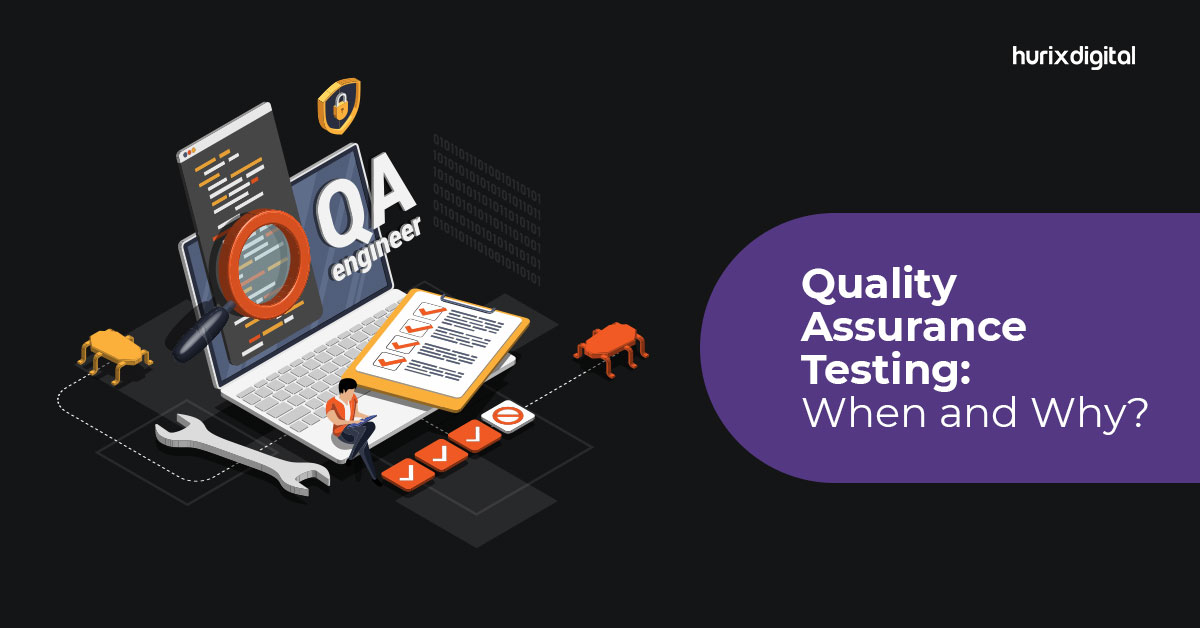
9 Best Practices in Third-Party QA Testing
Summarize with:
When it comes to software development, quality assurance and the process of software testing are as important as the actual code. Yet, the software QA process is largely carried out last, just before the release of the project.
Although the QA testing process is often time-consuming and detail-oriented, it plays a key role in making sure that the entire testing effort is successful, helping deliver reliable software and the best products. If planned and executed well, the quality assurance process can assure both the high quality and success of the product along with smooth business operations.
One of the smart ways to guarantee a positive outcome from third-party QA testing is to embrace a few best practices while performing test management.
In this blog, we are exploring the concept of QA testing in more detail along with best practices to adopt in 3rd party QA testing.
Table of Contents:
- What is QA Testing?
- Best Practices in Third-Party QA Testing
- Build a Robust Product and Third-Party Application Knowledge before Testing
- Plan the Testing and QA Process in Detail
- Focus on Improvement in Quality
- Apply Effective Methodologies
- Prioritize Risk Management with Quality Assurance
- Utilize Testing Strategies Based on Requirements
- Test Early and Test Often
- Automation
- Practice to get it Right the First Time
- Bottom Line
What is QA Testing?
Quality Assurance (QA) testing is a systematic process that ensures product and service excellence. A qualified QA team examines the specific requirements to design, develop, and manufacture reliable products to increase company credibility, client confidence, and the ability to be successful in a competitive environment.
Put simply, QA testing is an excellent technique used to prevent issues with the product you are offering and to ensure exceptional user experience for your customers. An organization has to ensure that its processes are efficient and effective as per the quality standards defined for software products.
Related Read: How QA Services Can Improve Your Business Competitiveness
Best Practices in Third-Party QA
Testing The only way to achieve a high-quality product is to have an effective QA process in place. Here are a few best practices in 3rd party QA testing that will help you achieve greater success in quality assurance:
1. Build a Robust Product and Third-Party Application Knowledge before Testing
There are many times when third-party application issues during testing can be mistaken for actual product issues. This can significantly impact testing and affect your time-to-market.
It is, therefore, important that the QA team should develop an extensive knowledge of all domains (APIs, OS, mobile, etc.) before executing test scenarios.
2. Plan the Testing and QA Process in Detail
One of the best ways to improve the overall quality of the end product is to well plan, define, and document the software test process.
Good documentation is an effective way to build efficient communication within the software team and allows them to maintain the quality and test plans for a project. A few of the most valuable documents that can be shared with clients or stakeholders include:
- Test plan
- Supported platforms
- Release notes
- Test cases/checklists
3. Focus on Improvement in Quality
The key objective of any quality assurance process is to assure all the stakeholders that the processes and activities used during the development of your software are thoroughly designed to maintain the high quality of the end product.
The QA testing, therefore, should primarily focus on improving the process of development of software to optimize the quality of end products.
4. Apply Effective Methodologies
An effective QA testing methodology can be instrumental in reducing the cost of the overall lifecycle of the software. It ensures that the software is conforming to all the requirements and standards, which are fundamental assumptions in the development of life-critical products.
Additionally, it is also important to define the right processes to be used in the development of the product and ensure that those processes are used as per the plan strictly, with no deviations.
5. Prioritize Risk Management with Quality Assurance
Unlike the popular notion that QA is synonymous with testing, quality assurance is a much broader term. It involves a whole spectrum of processes, activities, and risk management to assure the quality of your product.
Risk management, coupled with a quality check is, in fact, one of the building blocks of adequate quality assurance.
6. Utilize Testing Strategies Based on Requirements
To be able to perform different types of tests, such as security, mobile, agile, big data, and analytics, you need to follow different testing approaches that suit the specific kind of test management framework.
Simply put, it is important to follow a requirements-based testing approach that can help you in both system/application validation and in calculating the specific testing efforts needed.
7. Test Early and Test Often
QA testing aims to incorporate testing at each stage of the project’s lifecycle to identify issues as early as possible. Within each testing phase, QA engineers test and retest the product to check the viability of the new features added. This allows them to identify and catch any problems that may have been introduced during this process.
Testing early often involves continuous monitoring of the process to make sure that all the agreed-upon standards and procedures are being followed diligently along the development process.
8. Automation
It is always a great idea to find new ways to automate specific test cases that are repetitive. This, in no way, means spending a lot of money to automate each and everything.
The ideal option is to hire the services of a test automation service provider and install servers capable of handling the automated tests effectively.
Also Read: 4 Most Common Mistakes in Automation and How to Avoid Them
9. Practice to get it Right the First Time
In any delivery project even with watertight requirements, mistakes are inevitable. Getting it right the first time in software testing essentially means that all such potential errors should be eliminated.
The idea here is to determine with some degree of accuracy what you are trying to do in the project and create a solution that reflects what you want at the end and ensure that any kind of deviations are understood and accepted.
Bottom Line
Irrespective of the size or type of your business, it is necessary to let the products you develop undergo a rigorous quality assurance process as it will help your product stand firm in the face of competition.
The best quality assurance testing practices you adopt should inculcate different processes in general and risk management processes in particular. The key focus here should be to improve the overall quality of the software/product with continuous monitoring during and after the software release.
Relying on the services of a professional QA testing agency like Hurix can help your business. While performing quality assurance testing, the aim of the QA engineer or tester should be to comply with all the fundamental principles and industry practices along with keeping the end-user’s perspective in mind.
Get in touch with Hurix to see your business grow.
Summarize with:

 A Space for Thoughtful
A Space for Thoughtful 


